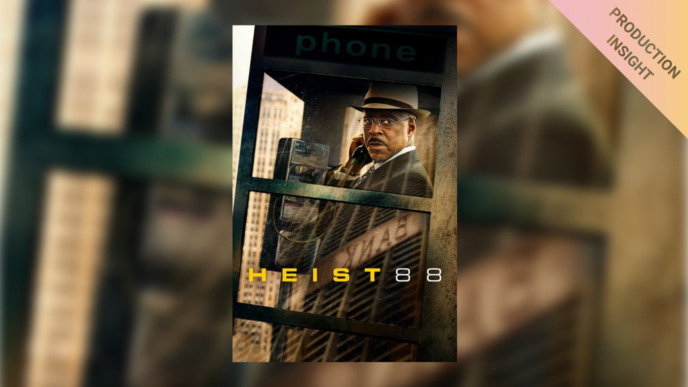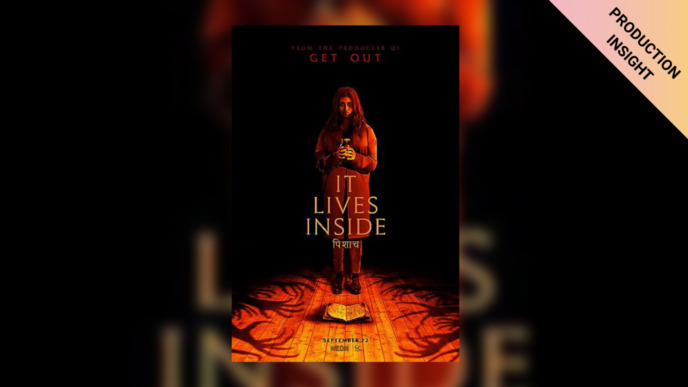
Argentina, 1985 depicts the true story of Argentina’s trial of the military dictatorship. For Argentinian DIT Martin Bendersky and his team, this was not just a regular movie production, but a powerful symbol of their country’s rich history. We got the chance to sit down with Martin who shared some exclusive production insights on how the use of Silverstack XT and Livegrade Pro helped bring this historical event to life.
But first, we wanted to know a little more about Martin, and how he ended up in the role of DIT.
First of all, thank you for sharing some insights into your work with us! To start, could you please tell us a bit about yourself and your professional life?
My name is Martin Bendersky, and I’m a Buenos-Aires based DIT. I studied cinematography, and since graduating, I’ve been involved in working on films as a DIT for the past 15 years. I started my career at the beginning of the digital cinema era in Argentina, so I got to grow professionally alongside the DIT role.
So what kind of projects do you usually work on as a DIT?
I usually work on feature films, series, and documentaries. Normally when deciding on what to work on next, I consider who the DP and director are, and which production company is making the movie. Then, I take a look at if there is any challenge involving the workflow, and on top of that, I consider whether or not I’d like to see the movie as a viewer.
You recently worked on a production called Argentina, 1985. Can you tell us a bit about this project?
Argentina, 1985 is a very important film for Argentina because of the history behind the story. It’s about the trial of the military dictatorship. I wanted to participate since I’ve always known how important this event was.

It’s the second film that I’ve worked on with the director and the fourth film that I’ve worked on with the DP, Javier Julia. When Javier called me to be part of this film, I didn’t hesitate to get involved. We are friends, and I also consider him to be a mentor. Over the years we’ve formed a relationship of trust, and there’s nothing better than working as a DIT with a good cinematographer that you know and trust.
What was this movie shot with?
The main camera was an Arri Alexa Mini LF, but we also introduced vintage cameras, like the Sony M3, to recreate the look of that time period. We used a wide variety of lenses like Arri Signature Prime for a more pristine image, Canon FD, and a Canon K-35 zoom. The formats we used were ARRIRAW (HDE), ProRes, and also standard PAL. We shot on full frame and s35.

Why did you decide to use Silverstack XT and Livegrade Pro for this project?
It’s difficult to imagine a workflow that requires on-set grading and dailies generation without Silverstack XT and Livegrade Pro. I have been using both applications for many years, and I feel like they are key tools in the DIT and Data Wrangler job.
What was your on-set workflow like with Silverstack XT and Livegrade Pro?
My cart is formed by a reference monitor, Flanders Scientific DM240, one or two FSI BoxIO, if the project needs it, a scopes monitor, AJA KUMO distribution matrix, and a Blackmagic MiniMonitor to go in/out of Livegrade or DaVinci resolve. I use Livegrade to color manage on set, then send the signal to the video village, especially when the DPs are on camera. I like DPs to have the same monitor that I use, as close as possible to the set, so they can see the lighting setup or make a review of a take. I like to work as lightweight and handy as possible.

How was your overall experience working with Silverstack XT and Livegrade Pro?
The best thing about the Pomfort applications is the connection between Livegrade Pro and Silverstack XT. I use it to create a color-managed workflow on set, and also to take care of the light continuity as the days go on and the project develops.
In Livegrade Pro, I can easily manage the looks that the project needs, and at the same time, keep them ‘open’ to create adjustments on the fly with a CDL. The possibility of saving stills and metadata shot by shot is great. I use a lot of PFL archives to ingest all the information to Silverstack XT, so all the dailies reports have the right information in them. Also, with Silverstack XT, you can easily keep track of any kind of metadata that you might need at any moment so you can maintain the integrity of the project. Luckily, in this project, the script supervisor used the app “Movie Slate,” which can also be integrated with Silverstack XT too. Not all script supervisors use it, but it’s great for workflow.
Were there any particularly challenging situations or setups on this project?

On the set of Argentina, 1985, we had a wide variety of looks that we used on different scenes. One of the things that made my work easiest was to have a look library, so I could switch between them quickly. Also, we had scenes with vintage lenses, so I needed to have an easy way to manage more technical looks with CDL modification. I remember 35mm Canon FD, it was kind of a nightmare the first time I tested it. It had a lot of chromatic issues, but I was able to grab stills quickly to make a comparison with the other lenses and generate look modifications for keeping consistency between them.
When you think back to Argentina 1985, what is your most memorable experience?
One of the things I will remember forever was the first time I entered the courtroom. It’s the same courtroom where the actual trial happened. It has very spooky energy. When we were shooting the allegations, I remember seeing the crew members’ faces full of emotion.
But on a more positive note, I really enjoyed working with the DP, Colorist Luisa Cavanagh, Post Supervisor Iair Attias, and all the team from the lab at Quanta Post. It’s great when you create a good look & feel, process as well as a workflow plan, and then everything works smoothly. It’s even better when you go to the theater and the movie looks great.
Is there anything we didn’t cover that you would like to share?
This past year I’ve started to work as a post-supervisor. It really makes me appreciate even more how important the DIT and Data Wrangler roles are. Having a good team on set with knowledge, good organization, and workflow is the key to having a smooth post-production.
Thank you so much to Martin for sharing his insights on this powerful production!
Martin Bendersky, DIT
Martin is a Buenos Aires-based DIT passionate about filmmaking and everything it involves. In addition to working as a DIT, he also takes on roles in post-production, and as a cinematographer.



